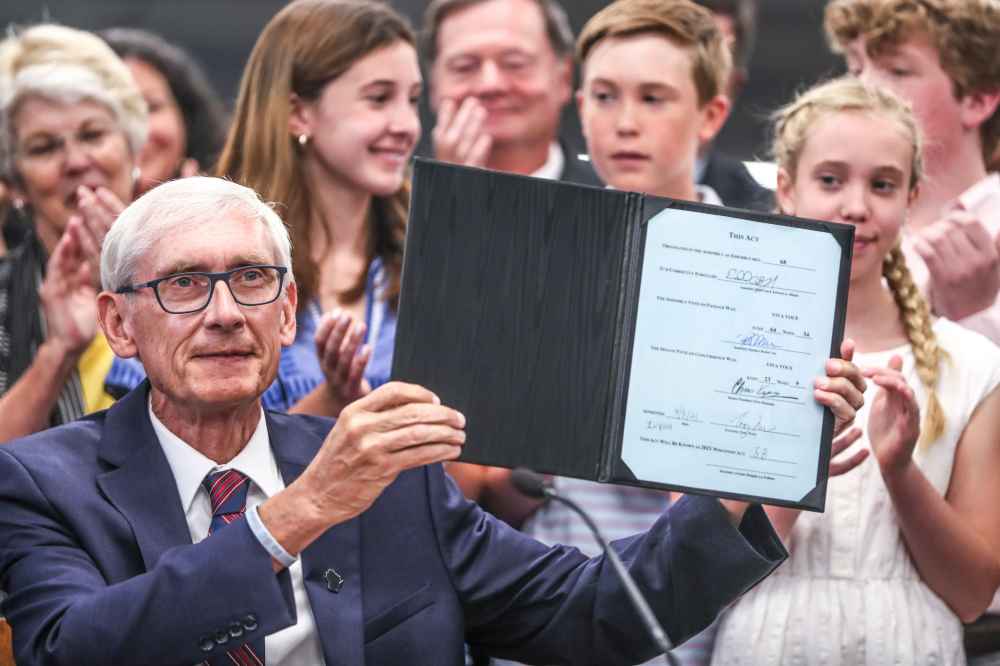Evers, a Democrat, employed creative tactics in this Republican tax cut, which marked the third budget passed by a Republican Legislature that he has approved.

Wisconsin Governor Tony Evers signed a two-year spending plan, despite facing criticism from Republicans for gutting a Republican tax cut and utilizing his partial veto powers to boost school funding
As part of his actions, Evers reduced the GOP Republican tax cut from $3.5 billion to $175 million, completely eliminating lower tax rates for the top two income brackets. By modifying the language, he extended the duration of the increase.
Although his decisions drew criticism from Republicans, Evers defended the budget, emphasizing the wins achieved, during a signing ceremony attended by Democratic lawmakers and local leaders.
The broad partial veto power has been historically used by Wisconsin governors, regardless of party affiliation, to reshape the Republican tax cut. Evers’ use of the partial veto this year pales in comparison to the record set by Republican Governor Tommy Thompson in 1991, who employed 457 partial vetoes. In the past, constitutional amendments were introduced to restrict certain types of vetoes.
Republican Assembly Speaker Robin Vos criticized Evers’ vetoes, arguing that allowing unlimited increases in school revenue limits would lead to substantial property tax hikes
Vos also expressed worry that reducing the scope of the Republican tax reduction would place Wisconsin in an unfavorable position when compared to neighboring states that have lower tax rates. However, the prospects of Republicans overriding the vetoes seem unlikely due to the required two-thirds majority, which would necessitate Democratic support in the Assembly.
Republicans had proposed using a significant portion of the state’s projected $7 billion budget surplus to reduce income taxes and streamline Republican tax cut brackets. While Evers was unable to reverse the $32 million cut to the University of Wisconsin, which Republicans claimed would have been allocated to diversity, equity, and inclusion programs, he employed his limited authority to veto in order to protect 188 DEI positions at the university, which were scheduled to be removed according to the Republican proposal.
Evers also vetoed a measure that sought to restrict Medicaid payments for gender-affirming care, accusing Republicans of promoting discriminatory policies. Despite calls from liberal advocacy and watchdog groups to veto the entire Republican tax cut, Evers chose to sign it, highlighting the need to secure funding for schools, combat water pollution, invest in affordable housing, and provide pay raises for state employees.
READ ALSO: Major Changes Planned For Minority Scholarships Following Supreme




